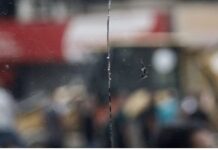Abdaljawad Omar
Mondoweiss / September 4, 2024
The current operation in the West Bank is meant to test the boundaries of what Israel will be allowed to get away with. It is setting the stage for the forced ethnic cleansing of the Palestinian people.
There is a pretense of novelty in Israel’s most recent offensive in the West Bank, which it has glibly called “Operation Summer Camps.” Even before it began, Israel announced that the operation was the most wide-ranging invasion of the West Bank since 2002. What is most striking about this framing is the charade that each new operation represents a fresh response to an emerging threat. In truth, these actions are part of a continuous, unbroken chain of suppression and a bloody impulse through which Israel exercises its power to kill and arrest, all the while undergirded by a continuous desire to see Palestinians disappear.
Many have already observed that Israel’s need for constant initiative across its numerous battlefields is central to the hyped-up nature of its offensive. In Gaza, Israel finds itself consolidating its presence in the Philadelphi and Netzarim corridors, with little military initiative elsewhere in the strip beyond maintaining relentless pressure on a Palestinian population that has endured all manner of horrors over the past 11 months, including daily massacres that are tearing apart the social fabric of the small and dense coastal strip.
In the north, the Lebanese resistance and the Israeli military trade blows within a highly regularized set of rules of engagement. Despite earlier escalations, the battlefield remains largely fixed within specific rhythms, extracting a toll from both sides without any clear resolution in sight.
In other words, Israel’s military campaigns, if not approaching a stalemate, have settled into a war of attrition. The way to regain the initiative is to open up another, perhaps “easier” front that might offer a clearer image of “victory,” even as the actual prospects for decisive victories in other theaters fade. But to whom does Israel want to demonstrate this initiative?
A projection of strength
First and foremost, Israel’s military machine is being driven by the demands of its own settlers and the right-wing agenda that pushes the country toward perpetual war. The need to see things happening — soldiers breaking into homes, Palestinian fighters being killed — is imperative for the type of war Israel is currently waging.
This pressure for more war, originating in a certain segment of Israeli society, is juxtaposed with another pressure from a different segment, which concedes the need for more war but insists on getting back the captives held in Gaza first.
In a prolonged military campaign fraught with economic costs, social and political divisions, and an underlying fear of peace that pervades Israeli society, the military machine must continually find new campaigns to justify its actions — often designating them with bombastic and at times perverse names.
These campaigns serve to placate a restless public, with each operation presented as a fresh initiative, even if they bear a striking resemblance to numerous operations that Israel has regularly carried out in the past.
This narrative of tactical accumulation — the constant movement of troops and the ability to fight on multiple fronts simultaneously — serves to project an image of strength. But it conceals an underlying rot, which is Israel’s lack of viable solutions when it comes to directly confronting its arch-nemesis, Iran, or engaging in open warfare in the north with the Lebanese resistance.
This is why the West Bank offers a convenient respite — a new theater where the illusion of control and progress can be temporarily sustained, even as the broader strategic picture grows increasingly dire.
Psychological warfare and testing boundaries
Second, these operations are also “cognitive” in nature, a term favored by Israeli military leaders and strategists to describe the collection of tactics that include engaging in information warfare, making Israel’s military presence felt, committing war crimes, and causing widespread destruction to infrastructure.
Israel employs this range of military tactics to create an impression — on its own people, but more importantly, on the Palestinians.
In this context, Israel describes the Gaza model as replicable in the West Bank and flirts with the possibility of a wider ethnic cleansing campaign. Additionally, as it reenacts some of Gaza’s imagery in the northern West Bank, Israel is testing the tolerance levels of its international allies and satisfying its right-wing base all at once, gauging the extent to which it can get away with changing the realities on the ground in the West Bank, Gaza, Lebanon, and the region.
It forces Palestinians in the West Bank to grapple with the anxiety of a looming war of annihilation without the concrete capacity to resist. It’s a form of collective psychological torture that impacts everyone in the West Bank, who hurry to reckon with the campaign’s purported novelty, intensity, and violence. Rumors spread, and the Palestinian Authority, operating in the shadows, feeds Palestinians talking points that serve to exalt the policy of Mahmoud Abbas — who by not confronting Israel and cooperating with its security apparatus, protects against the replication of the model of annihilative war in the West Bank. This is exactly the conclusion Israel wants Palestinians to reach.
Taking the fight to the resistance
Third, on a tactical level, the military campaign is designed to take the fight directly to the armed movements in the northern West Bank. This is particularly crucial in light of growing signs that some factions within the mosaic of groups in the north are shifting toward more offensive actions. These include failed attempts to plant a bomb in the heart of Tel Aviv and the resurgence of car bombs originating from the south of the West Bank. The campaign aims to put the Palestinian resistance on the defensive.
Yet even on those terms, the Israeli campaign already seems to be a failure, since during the campaign three car bombs were discovered elsewhere in the West Bank (one near Ramallah, and two near Bethlehem), and a shooting attack by a former member of the PA Presidential Guard left three Israeli security personnel dead in the southern West Bank hills of Hebron, far from the center of Israeli operations in the North.
As the West Bank increasingly transforms into a hotbed of resistance and a theater for regular military operations, the Israeli army — already stretched thin across multiple fronts — will be compelled to commit substantial resources not only to conduct offensive operations but also to maintain a robust defensive posture across a territory spanning 5,000 square kilometers.
This dual demand on manpower and resources presents Israel with a problem that is already forcing a discussion about the potential impact of a third front on the military operations on the Lebanese borders and Gaza. In the past, Israel’s more pragmatic leadership made calculated decisions that allowed it to secure significant gains in its wars with the Palestinians. During the Second Intifada, Israel strategically chose to withdraw from Gaza, allowing it to concentrate its military efforts on suppressing the Intifada in the West Bank. However, Israel is now governed by leaders who vehemently opposed the Gaza disengagement, with a Prime Minister more preoccupied with his own political survival and legacy than with long-term strategy. This leadership clings to the belief that perpetual war will somehow advance Israel’s interests, despite mounting economic, political, diplomatic, and military costs. They frame Israel’s current struggle as a second “independence” war, yet as the conflict spirals and deepens, their mismanagement of strategic dilemmas starts to take a toll.
Israel is essentially relying on time and military force to resolve its challenges, but like any gamble, the outcome remains uncertain. While force may provide short-term gains, the longer-term risks and costs are accumulating, and betting on indefinite conflict could ultimately prove to be a severe miscalculation.
Beyond the operation: strangling the West Bank
More fundamentally, Israel’s policy of “economic deprivation” in the West Bank, alongside efforts by its right-wing factions to decouple Israeli trade, labor markets, and infrastructure from the territory, gives a glimpse of the type of war advocated for by figures like Bezalel Smotrich and Itamar Ben-Gvir. Since October 7, the leaders of the messianic settler movement, who are now driving Israel’s government agenda, have intensified their efforts to arm settlers en masse and are directing the state to further decouple Israel from the West Bank economically, financially, and infrastructurally.
This strategy reflects a broader vision of the right-wing: by cutting off the West Bank from Israel’s economy, they aim to deepen Palestinian isolation, further entrench Israeli territorial control, and weaken the relations that have created a comfortable status quo for the Israeli state in the past two decades.
It also aims to artificially induce economic collapse and shrink the Palestinian economy in the West Bank. Some of these policies, such as pirating Palestinian customs taxes, have been in place for a long time, but Bezalel Smotrich is now pushing for more aggressive measures. He has hinted in the direction of financial decoupling from Palestinian banks and other forms of economic warfare designed to create abject conditions in the West Bank. These moves would deepen the economic isolation of Palestinians. It would also delink Israelis from any interests in trade and labor with the West Bank and create the conditions for an economically- fueled ethnic cleansing — but more importantly, it will set the stage for a forcible campaign of ethnic cleansing.
Let us be clear: these measures are not merely empty gestures or intimidation tactics; they serve as a clear indication of what is to come. The groundwork is being laid for a broader offensive.
While the mere flirtation with such policies is itself a form of power, instilling fear, anxiety, and disorientation among Palestinians, it also outlines the gradual erosion of their daily lives. These policies signal the slow but steady loss of economic and social stability.
Let us be clear: these measures are not merely empty gestures or intimidation tactics; they serve as a clear indication of what is to come. The groundwork is being laid for a more comprehensive and systematic effort to further isolate and delink Israel from Palestinians in the West Bank, make more aggressive land grabs, and prepare for a broader offensive.
Israel’s disposition toward war is perpetual, and its war on the Palestinians is a daily reality fueled by the complicity of its allies, an endless supply of weapons, and a staggering lack of accountability. When Israel Katz declared on X that Israel must “address this threat by all necessary means, including, in some cases of intense combat, allowing the population to temporarily evacuate from one neighborhood to another within the refugee camp,” he was not merely making a tactical suggestion. Katz was speaking directly to Israel’s counterparts around the world, laying the groundwork for an escalation in the use of firepower in the West Bank and normalizing the forced displacement of Palestinian populations from their homes in refugee camps, towns, and villages.
What history tells us, especially in the context of Israel’s war on the Palestinians, is that wars are often won by accumulation — through a relentless combination of psychological warfare, overwhelming firepower, and the deliberate creation of unbearable conditions designed to drive the Palestinian population to leave. This is the lens through which we should view the current struggle in the West Bank and the inevitable military operations that will continue to define the region for the foreseeable future. These actions are not isolated incidents but part of a slow, yet steadily escalating strategy, edging both the Palestinians and the world closer to the brink of the abyss.
Abdaljawad Omar is a PhD student and part-time lecturer in the Philosophy and Cultural Studies Department at Birzeit University












